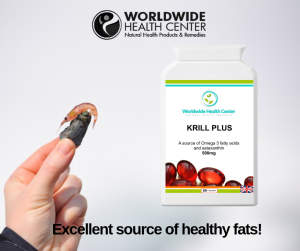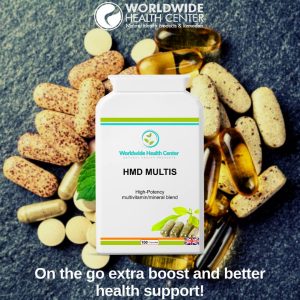Need help? Email us:
- AMINO ACIDS
- Antioxidants
- Blood Sugar Regulation
- Bone and Joint Repair
- BOOKS
- Brain Food & Energy Supplements
- Candida Support
- Cardiovascular Support
- Cholesterol
- Constipation Relief
- Dental Health
- Detox
- Digestive Support
- Eye Support
- Fatty Acids
- Gut Health
- Hair Mineral Analysis
- Heavy Metal Detox
- Herbal Tinctures
- Immune Support
- Liver Support
- METABOLIC TYPING
- Multivitamin & Mineral
- Natural antimicrobials and parasite remedies
- Natural Diuretic
- Probiotics
- Prostate Health
- Tachyon Products
- Uncategorized
- VITAMINS
- WEIGHT LOSS
OXYGEN FREE RADICALS AND AGING: PART II

Oxygen Free Radicals and Aging: Part II
by Emmanuel C. Opara, Ph.D.
In case you missed Part I of this three-part series, we reviewed the major theories of aging, including: the rate of living theory; the somatic mutation theory; the neuroendocrine theory; the glycation theory; the crosslinking theory; and the free radical theory. The free radical theory of aging, which holds that aging is due to damage to DNA and molecular membranes by highly reactive molecules known as free radicals, is especially appealing for many reasons. First, it provides a unifying mechanism for the different theories; second, it can be experimentally verified; third, it suggests a number of parameters that can be evaluated to determine the progress of aging and the success of anti-aging therapies; and finally, it is a mechanism that can be altered by appropriate antioxidant therapies. Sources of free radicals were also discussed, which included both exogenous (outside the body) and endogenous (inside the body) sources. Some of these exogenous sources include air pollution and cigarette smoke. It’s obvious that it’s impossible to avoid contact with these reactive molecules.
Fortunately, the body is naturally equipped with antioxidant defense systems to detoxify these dangerous agents. Unfortunately, the body’s defense system becomes less effective as we get older, leading to the accumulation of oxidative damage and the development of chronic degenerative diseases like arthritis, hypertension, atherosclerosis, diabetes, cancer and diseases of the central nervous system such as stroke, Alzheimer’s disease and Parkinson’s disease. Depletion of antioxidants can thus lead to a variety of chronic diseases. The relationship between oxidative damage and aging is a double-edged sword. On one hand, oxidative damage to DNA, lipids, proteins and other macromolecules appears to be a major contributing factor to aging,1 while at the same time, this oxidative damage accumulates with aging, despite attempts by an individual’s cellular machinery to repair it.7,8
For example, blood levels of glutathione, the major cellular antioxidant in the body, decline with age.1,2 Low glutathione levels are associated with a higher incidence of diseases in the elderly.3 In fact, blood glutathione concentrations may become recognized not only as a predictor of susceptibility to disease, but also as a marker of biological age.
Oxidation and Disease Progression
In this article, we’re going to discuss the specific contributions that damaging free radical reactions make in promoting the onset and progression of the chronic degenerative diseases of aging. We’ll discuss the role of free radicals (oxidants) in the development of each of these diseases, and provide a strong rationale for using antioxidant supplements for disease prevention and treatment. Indeed, a great deal of evidence regarding the role of free radicals in aging and its related diseases has been derived from studies in which antioxidant supplements have been used to successfully treat or prevent these diseases. Many of these studies will be reviewed in Part III of this series.
Cancer
Free radicals are involved in both the process of aging and the development of cancer.4 They attack many cellular targets including membranes, proteins and nucleic acids,5 and cause structural damage to the cellular DNA. These structural changes manifest as point mutations and chromosomal alterations in cancer-related genes.5 Consequently, elderly people are predisposed to the development of cancer. Fortunately, certain antioxidant supplements like vitamins C and E, can prevent much oxidative damage to DNA and thus reduce the ability of the oxidants to induce cancer.7
Cardiovascular Disease
One of the most significant discoveries in modern cardiovascular disease research was the discovery of how free radical activity contributes to cardiovascular disease.4,7 These discoveries were made using two different approaches. One approach, using epidemiological studies, showed that cardiovascular disease is associated with low plasma concentrations of antioxidant vitamins.7 The other approach, using experimental studies, provided strong evidence that free radicals oxidize low density lipoprotein (LDL) – the bad form of cholesterol. The modified LDL molecules are then easily taken up by white blood cells called macrophages (phagocytes) to form foam cells and plaques in the cardiovascular wall,4,7 causing a hardening and narrowing of the blood vessels which impairs blood flow and deprives the heart of oxygen and nutrients. Also, what is known as reperfusion (reoxygenation) injury is caused by inadequate supplies of intracellular antioxidants! Reperfusion injury is the damage to cells which occurs following restoration of the blood and oxygen supply to the heart after a period of ischemia (inadequate blood supply). Antioxidants are able to prevent or reduce the severity of this type of tissue damage.4
Diseases of the Central Nervous System
Oxidative damage has been implicated in brain aging as well as several degenerative diseases of the central nervous system (CNS). A number of mechanisms have been identified which explain the causative role played by free radicals in the neurodegenerative diseases. First, oxidants may activate an enzyme of nerve cells (poly ADP-ribose synthetase) and cause an increase in the intracellular calcium ion concentrations, which is injurious to neurons.12 Second, reoxygenation of brain cells following a period of ischemia contributes to oxidant injury of the CNS, as already mentioned in the case of cardiovascular disease. Third, certain areas of the brain, e.g., the globus, pallidus and substantia nigra often contain high amounts of iron. Excess iron enhances oxidative reactions and consequent injury to the neurons.12 It is therefore not surprising that antioxidant supplements have been successfully used to improve the functioning of the brain both in people who are aging normally, as well as patients suffering from neurodegenerative diseases such as stroke and Alzheimer’s and Parkinson’s diseases.
I. Strokes
Free radical-produced damage due to ischemia-reperfusion in the brain has been implicated as a major cause of strokes.12 Antioxidant supplements appear to be of benefit in the prevention and reduction of strokes.12,13 And, to top it off, recent clinical studies indicate that surgical therapy (i.e., carotid endarterectory) is actually worse than no therapy in many cases.
II. Alzheimer’s Disease
Alzheimer’s disease (AD) is the tragic brain-robbing disease of aging. It can be recognized by the progressive loss of memory and other aspects of cognitive functioning. Its characteristic pathological features include tangles of nerve fibers, senile plaques (which contain aluminum, iron, and calcium) and the loss of brain cells.9 Oxidative damage has been implicated in AD, for a number of reasons. First, the brain has the highest oxygen consumption rate of any organ in the body, high concentrations of easily-oxidizable lipids, and a relative deficiency of antioxidant enzymes (compared to other tissues).9 Second, iron, which plays an important role in free radical generation, has been found in high concentrations in the brain in AD.9 Third, antioxidant supplementation often improves memory performance in aged individuals.10
III. Parkinson’s Disease
The hallmark of Parkinson’s disease is degeneration of a portion of the brain called the substantia nigra – the portion of the brain that produces the stimulatory neurotransmitters epinephrine (adrenaline) and norepinephrine (noradrenaline). There are two mechanisms that have been proposed as possible causes of this neuronal damage.11 The first is that increased production of oxidants causes damage to this vital portion of the brain (the substantia nigra) through iron-dependent free radical reactions. It has been shown that the iron content of the substantia nigra is often elevated, while ferritin, the iron-binding protein is often decreased in Parkinson’s disease. Again, the resulting increase in free iron ions enhances iron-dependent lipid peroxidation and damage to nerve cells.12 A second mechanism is impaired neuronal mitochondrial function, which leads to failure of energy production and adverse changes in the metabolism of nerve cells.
There are several mutually supporting links between these two mechanisms.11 As previously noted, mitochondria are a critical target for damage by free radicals.4,7,11 Also, mitochondrial damage may cause a further increase in generation of free radicals.11 Another link between the two mechanisms (i.e., oxidative damage to mitochondria vs. free-radical induced damage to neuronal metabolism) is glutathione. Patients with Parkinson’s disease tend to have low levels of this powerful intra-cellular antioxidant in their brains, resulting in higher levels of free radical activity.11 These two mechanisms both contribute to neuronal damage through alterations in glutathione levels.11
A variety of antioxidant vitamins and drugs are helpful for patients with this disease, especially Vitamin E and deprenyl I believe that one of the most beneficial nutrients for Parkinson’s disease is N-acetyl cysteine (NAC). NAC boosts glutathione production, and should be of tremendous benefit to Parkinson’s patients, in doses ranging from 600-1200 mg per day.
Inflammatory Diseases
Arthritis and inflammatory diseases of the large intestine, such as ulcerative colitis and Crohn’s disease, are conditions in which oxidative damage has also been implicated.4,14 While there is agreement that free radicals play a role in the pathogenesis of inflammatory disease, the mechanism(s) involved is still a matter of intense research. One plausible mechanism of oxidant mediated injury involves tissue protein oxidation, otherwise referred to as protein carbonylation. It has been proposed that inflammatory bowel disease (IBD) may arise from the oxidation of proteins in the intestinal mucosa cells which thereby disrupt the critical enzyme systems that are important for the maintenance of mucosal integrity or ion transport, both of which are impaired in IBD.15 Antioxidant supplements have helped many people who suffer from a variety of inflammatory diseases.4,7,15
Diabetes
Diabetes is a multi-systemic disease caused by a defect in glucose metabolism. Abnormally high blood sugar levels are a major clinical feature of the disease, which is usually followed by accelerated onset and progression of atherosclerosis and other diseases. In type 2 diabetes, oxidative damage has been implicated in both the development of the disease as well as its many complications. Oxidants inhibit glucose metabolism in the glycolytic pathway and at the level of oxidative phosphorylation, thereby causing a sugar overload in the blood. The medical term for high blood sugar levels is hyperglycemia. Increased blood sugar levels cause auto-oxidation of glucose and glycation of proteins which have been implicated in the development of diabetic complications.16 It is therefore not surprising that antioxidant supplements – particularly vitamins C and E, and lipoic acid – have been found to be beneficial to patients suffering from diabetes.16 This subject was covered extensively in previous reviews by this author (see Nutritional News volume 10: 6 and 7, 1997).
Vision
I. Cataracts
Oxidative damage to the lens of the eye, which collects and focuses light on the retina, plays a major role in the formation of cataracts.7,17 With age, the constituents of the lens are damaged by oxidants causing opaque precipitations that are referred to as senile cataracts.17 A variety of antioxidant supplements have been shown to provide protection against the development of cataracts7,17 – especially, lipoic acid – a key player in the prevention of cataracts.
II. Macular Degeneration
Macular degeneration is a leading cause of blindness in the elderly. It is one condition which ophthalmologists used to stand by and helplessly watch as their patients’ vision failed. Now, they are finding that combinations of antioxidant and carotenoids have demonstrated the ability to halt or delay the progression of this dreaded condition.
Many studies have been performed with multi-nutrient protocols to treat ARMD and cataracts. For example, Dr. E.N. Crary of Smyrna, Georgia published a study in 1987 in the Southern Medical Journal titled “Antioxidant Treatment of Macular Degeneration of the Aging and Macular Edema in Diabetic Retinopathy.” In this study, Dr. Crary used 250 mcg of selenium, 15,000 units of beta carotene, 500 mg of vitamin C and 400 units of vitamin E for a period of 7 to 12 years. He treated over 500 patients and found that the treatments either halted or improved degenerative macular changes in 60% of the patients with age-related macular degeneration.
Summary
It is apparent, as outlined above, that free radical (oxidative) damage plays a significant role in the process of aging as well as in the development of a broad spectrum of age-associated diseases. Specific supplements and their dosages for preventing and minimizing the effects of these diseases will be reviewed in part III of this series.
References:
1. Lang CA, Naryshkin S, Schneider DL, Mills BJ, Lindeman RD. Low blood glutathione levels in healthy aging adults. J Lab Clin Med 120: 720-725, 1992.
2. Vina J, Sastre J, Anton V, Bruseghini L, Esteras A, Aseni M. Effect of Aging on glutathione metabolism. Protection by antioxidants. In: Free Radicals and Aging. Emerit I and Chance B (eds.), 136-144, 1992.
3. Julius M, Lang CA, Gleiberman L, Harburg E, DiFranceisco W, Schork A. Glutathione and morbidity in a community-based sample of elderly. J Clin Epidemiol 47: 1021-1026, 1994.
4. Cross CE, Halliwell B, Borish ET, Pryor WA, Ames BN, Saul RL, McCord JM, Harman D. Oxygen Radicals and Human Disease. Ann Int Med 107: 526-545, 1987.
5. Cerutti P, Ghosh R, Oya Y, Amstad P. The role of the cellular antioxidant defense in oxidant carcinogenesis. Environmental Health Perspectives 102 (suppl 10): 123-130, 1994.
6. Block G. A role for antioxidants in reducing cancer risk. Nutrition Reviews 50: 207-213, 1992.
7. Ames BN, Shingenaga MK, Hagen TM. Oxidants, antioxidants and the degenerative diseases of aging. Proc Natl Acad Sci (USA) 90: 7915-7922, 1993.
8. Gilchrist BA, Bohr VA. Aging processes, DNA damage, and repair. FASEB J 11: 322- 330, 1997.
9. Lovell MA, Ehmann WD, Butler SM, Markesbery WR. Elevated thiobarbituric acid- reactive substances and antioxidant enzyme activity in the brain in Alzheimer’s disease. Neurology 45: 1594-1601, 1995.
10. Perrig WJ, Perrig P, Stahelin H. The relation between antioxidants and memory performance in the old and very old. J Am Geriatr Soc 45: 718-724, 1997.
11. Di Monte DA, Chan P, Sandy MS. Glutathione in Parkinson’s disease: a link between oxidative stress and mitochondrial damage. Ann Neurol 32: S111-S115, 1992.
12. Halliwell B. Oxidants and the central nervous system: some fundamental questions. Acta Neurol Scand 126: 23-33, 1989.
13. Mobarhan S. Micronutrient supplementation trials and the reduction of cancer and cerebrovascular incidence and mortality. Nutrition Reviews 52: 102-105, 1994.
14. Ruan EA, Simbasiva R, Burdick S, Stryker SJ, Telford GL, Otterson MF, Opara EC, Koch TR. Glutathione levels in chronic inflammatory disorders of the human colon. Nutrition Research 17: 463-473, 1997.
15. Otamiri T, Sjodahl R. Oxygen radicals: their role in selected gastrointestinal disorders. Dig Dis 9: 133-141, 1991.
16. Paolisso G, Giugliano D. Oxidative stress and insulin action: is there a relationship? Diabetologia 39: 357-363, 1996.
17. Taylor A. Effect of photooxidation on the eye lens and role of nutrients in delaying cataract. In: Free Radicals and Aging. Emerit I and Chance B (eds.), 266-279, 1992.
Important Links

Dr. George J. Georgiou
Dr. George J. Georgiou, Ph.D., N.D., D.Sc (AM), M.Sc., B.Sc, is a world-renowned expert in the field of holistic medicine and detoxification. As the inventor of the highly acclaimed Dr. Georgiou's Heavy Metal Detox Protocol, and the main product, HMD™ (Heavy Metal Detox), he has revolutionized the approach to natural heavy metal detoxification. With over 35 years of experience in natural medicine, he has authored 23 books, including the comprehensive guide 'Curing the Incurable with Holistic Medicine,' which offers invaluable insights and over 700 scientific references. Dr. Georgiou's groundbreaking work is sought after by individuals and practitioners worldwide through his Da Vinci Institute of Holistic Medicine and Da Vinci Holistic Health Center based in Larnaca, Cyprus.









